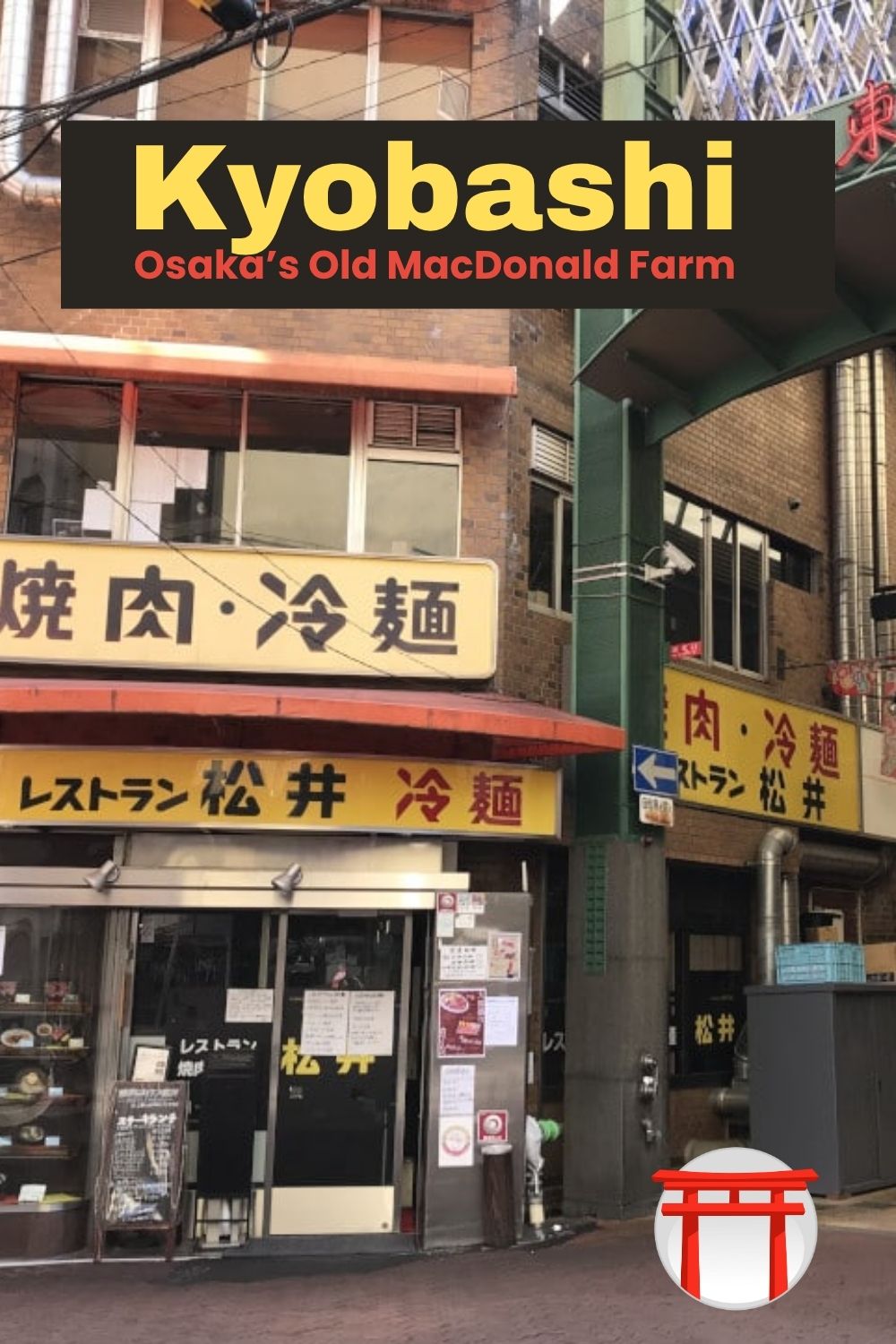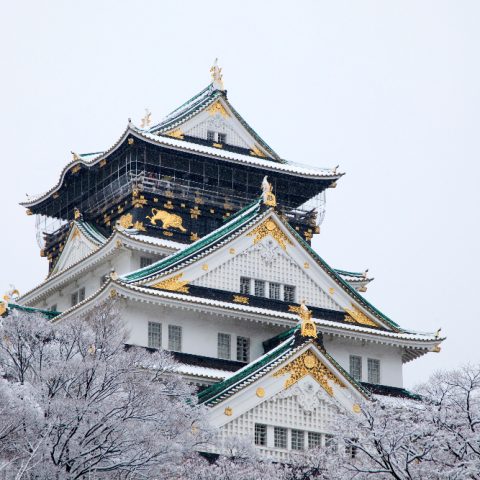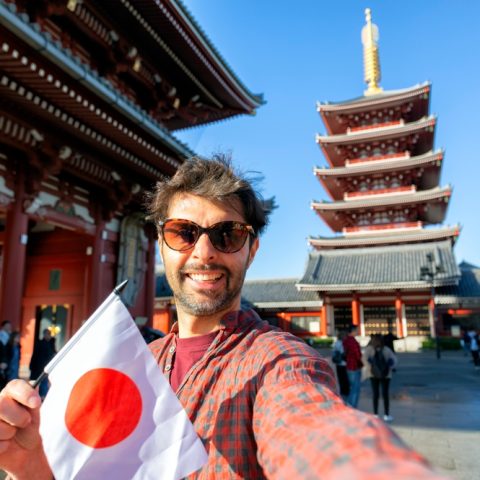
Osaka is the home of kuidaore (literally translated as either “eat-yourself-broke” or “eat-til-you-drop), where people spend a lot of their hard-earned money on delicious dining experiences. The biggest city in West Japan has loads of restaurants, bars, and established local foods. Takoyaki and okonomiyaki are among them and are incredibly popular among people nationwide and worldwide.
You might think Dotonbori District is the best place to dine since it’s popular with both locals and tourists, and the Glico sign is seen as Osaka’s symbol with a nice river view.
However, Dotonbori and the surrounding Minami District are very busy, with loads of shoppers and tourists. So the district may be too much for some and they’ll want an alternative place to dine out.
My recommendation for you today is to go to Kyobashi in the eastern suburb because it’s less crowded and not overfilled with tourists. Also, it is close to Osaka Castle, one of the most popular tourist attractions in Osaka, and it has great public transport access. And more importantly, there are heaps of restaurants and bars with a wide range of choices, where you’re likely to have your unique kuidaore experience.

You might wonder what is related between the old MacDonald’s farm and Kyobashi. The answer is found at JR Kyobashi Station. When trains on the JR Osaka Loop Line are about to depart there, music from the song the Old MacDonald Had a Farm is played on the platforms.
This train departure music was introduced by JR West in March 2014, under the railway company’s Osaka Loop Line Renovation Project. JR West has set individual train departure music for all Osaka Loop Line Stations, with a big wish that passengers develop an affection for their local stations.
As a railway fan, I like JR West’s idea and my personal favourite theme is Tenma Station’s Hanabi (firework displays) sung by Aiko, with Kyobashi Station’s becoming my second favourite in the loop rail network.
Actually, Kyobashi Station’s train departure music is Osaka Umaimon Song, a parody of Old MacDonald Had a Farm. The Osaka parody has been created by local nursery school teachers for music and plays.
*Umaimon is an Osaka dialogue that means delicious.
Below is a translation of its lyrics, and teachers show choreography to pupils, who then repeat it:
There are many delicious foods in Osaka.
Takoyaki, dumplings, okonomiyaki, pork hot buns!
There are many delicious foods in Osaka.
Kanidoraku, kuidaore, monjayaki, why?!
The last word ‘why?!’ is sung in a hilarious way – the original word is nandeyanen! in the Osaka dialogue.
This song has been picked as Kyobashi Station’s train departure music, as a reflection of it being a bustling town that offers delicious foods. JR West’s concept really demonstrates how attractive dining in Kyobashi is.

The atmosphere of the town differs by area – the east and north sides of the suburb have a traditional old downtown atmosphere, while the west side establishes a more modern and fashionable ambiance. This fact is shown in the cuisine as well, and this will help you to pick a premise to meet your needs from a wide range of choices.
The former have arcade shopping malls. El Kyobashi and East Kyobashi Arcade Shopping Mall are located under and by the Keihan Railway viaduct. Like under viaduct malls everywhere in Japan, the majority of these two malls are made up of izakayas (Japanese pubs) and bars.
Visiting either of them makes you feel you are on a trip back in time to the Showa Period (1926-1989). Standing bars create such a unique, enjoyable atmosphere. Sensing the traditional kuidaore culture will bring you an exclusively Japanese experience, no matter whether you are a tourist or an expat.

Popular izakayas dishes including gyoza (dumplings), karaage (deep-fried chicken), yakitori (grilled skewered chicken), stir-fried egg, and sashimi will satisfy you if you like Japanese foods. Also, Osakans’ favourite kushikatsu (deep-fried skewered meats, seafood, and vegetables) are available.
If you want something different: Korean, Chinese, Italian, Spanish, and American cuisines should also be on your list.
Then, New Kyobashi Shopping Mall (aka Begin Kyobashi) and Kyobashi Central Shopping Mall (aka Live Street), located north of Kyobashi Station, have different establishments of businesses when compared to El Kyobashi or East Kyobashi Mall. Those two arcade shopping malls have cloth shops, florists, a bike shop, goods shops, and more, with tens of restaurants to choose from.
If you are keen on Osaka’s established and popular nationwide okonomiyaki, hit Gonza at Live Street, or Fue at Begin Kyobashi. Another Osaka-established treat, takoyaki, can be ordered at Takoyaki Rainbow at Live Street and Yamagen at Begin Kyobashi.

For more Japanese foods at both Begin Kyobashi and Live Street, udon, soba, and ramen restaurants are located there.
Now that the exploration of the east and north of Kyobashi is over, it’s time to feature the western part of the suburb. Contrasted with the east and north, modern and fashionable restaurants and bars welcome you for different kuidaore experiences.

Keihan Mall is handy and easy to travel to on a Keihan or JR train since it’s adjoined by the Keihan Kyobashi Station. The shopping mall was renovated in 2017, and now the company offers customers a rich and deep life with small foundations and meet-ups.

On the northern pavement, terrace tables are available for dining with foods purchased at surrounding restaurants. This renovation has brought us a clean, modern, and fashionable atmosphere in Kyobashi.
Keihan Mall has two buildings – the Main Building and Hotel Building. Restaurants are located on the first floor of the Main Building and are also available on the fifth and sixth floors of the Hotel Building. Also, you can try cafes on the first and second floors of the Hotel Building.

There are also loads more restaurants and bars on their sister premises, called K Buratto and Kiki Kyobashi, located west of the Keihan Mall. Those areas are also incredibly modern and fashionable.

Keihan Mall, K Buratto, and Kiki Kyobashi all offer a wide variety of cuisines, ranging from Japanese foods to Westen and Italian and Spanish. There are even a plethora of Chinese and Korean restaurants. The majority of cuisine is Japanese there – okonomiyaki, tempura, sushi, kushikatsu, soba, ramen, and so much more.
There are many options in a bright and flashy zone, so you might take a long time to make a final decision. But it really shows why dining in West Kyobashi is so attractive, doesn’t it?

My favourite restaurant in town is Tempura and Wine Kojima, located at K Buratto. Even if I have only had tempura combos, I can truly sense that tempura and wine match so well.

Photo Credit: Tabelog
What I am most impressed with at the tempura restaurant is that they serve tempura twice at different times for tempura combos (teishoku). This way customers can always enjoy warm and fresh tempura. I really like their good services and reasonably priced meals. It’s my #1 recommendation for everyone!
For healthy options, Keihan Mall has a French bistro restaurant called Chicken and Lemon Harvard. Their French chef cooks various bistro meals as well as oden (Japanese hot pots). Sanmi at K Buratto provides brown rice meals accompanied by fresh vegetables. Their high-quality ingredients really help increase modern people’s nutrition levels.
As Osaka’s MacDonald Farm, Kyobashi offers various cuisines and meals, whether traditional or modern. It’s an exciting suburb to walk around and dine at, and you can definitely have your authentic kuidaore experience in Kyobashi.

Well… By reading this blog, your kuidaore legendary has already started. Happy planning and enjoy dining in Kyobashi!
Book your local guide for a local foodie experience in Osaka!




